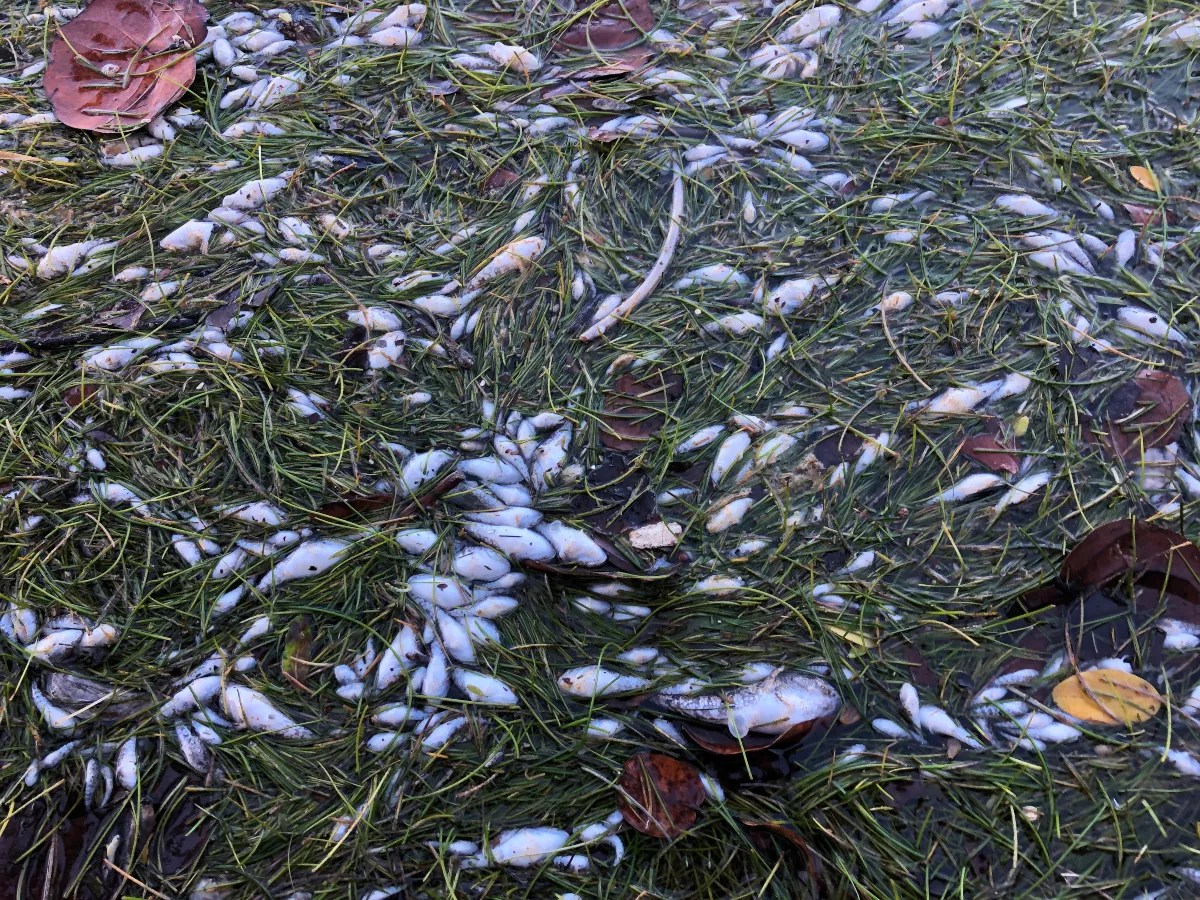
Photo by Kathryn Mikesell

Audio By Carbonatix
Update, August 13: Tests reveal that water samples from Biscayne Bay have normal levels of chlorophyll, meaning there’s no evidence of algae blooms at this time, according to Miami Waterkeeper. But the samples have low levels of dissolved oxygen, creating an environment where hydrogen sulfide gas can invade the cells of plants and animals. Miami Waterkeeper says the lack of oxygen in the water is likely because of the ongoing seagrass die-off in the bay.
For the past five years, Kathryn Mikesell has spent at least three days a week taking a morning swim in Biscayne Bay.
But when she went to jump in near Morningside Park yesterday morning, Mikesell saw several dead fish floating on the surface of the water. At first, she thought some fishermen might have dumped their bait. Then she started seeing them everywhere: dead flounder, lizardfish, pufferfish, mullet, and more.
“There were just dead fish on the entire swim,” Mikesell tells New Times. “I’ve never seen anything like this.”
Miami, make your New Year’s Resolution Count!
We’re $14,000 away from reaching our $30,000 year-end fundraising goal. Your support could be what pushes us over the top. If our work has kept you informed, helped you understand a complex issue, or better connected you to your community, please consider making a contribution today.
State and county officials are now investigating what appears to be a widespread fish kill in the bay between the Venetian and the Julia Tuttle causeways. Miami-Dade inspectors believe the water has become so warm that there’s not enough oxygen for marine life to survive, according to Tere Florin, a spokesperson for the county’s Department of Environmental Resources Management (DERM).
“While we cannot be absolutely certain at this time, it appears that the very high temperatures and very low dissolved oxygen levels in the shallow waters…are likely contributing to or driving the situation,” Florin writes in an email. “This is because the hotter the water is, the less available oxygen becomes.”
Miami Waterkeeper director Rachel Silverstein believes there might be another contributing factor: nutrient pollution.
Silverstein says that when dirty stormwater, pet waste, fertilizer runoff, and other forms of pollution get into the water, it can cause the growth of algae blooms, which then suck up all the oxygen.
“Scientists have been warning us that Biscayne Bay is at a tipping point for nutrient pollution for years now,” she says. “I think this is a sign of an unhealthy ecosystem.”
Miami’s problem with pollution in the bay, which has been extensively documented, is compounded by rising temperatures due to climate change. Florin says the water temperature measured 90 degrees yesterday.
DERM inspectors have collected specimens of the dead fish to send to the Florida Fish and Wildlife Conservation Commission. Miami Waterkeeper volunteers also will continue to monitor oxygen levels and send water samples to Fish and Wildlife to check for algae-bloom toxins.
Silverstein says fixing Biscayne Bay requires action on multiple fronts: passing an ordinance limiting fertilizer use, repairing sewage infrastructure, getting rid of septic tanks, and more. Although there’s no easy solution, she says it’s imperative that local governments work together to prioritize the health of Biscayne Bay – and soon.
“We know what we need to do; we now need the will to do it,” Silverstein says. “This is the big red flashing arrow that there’s a problem, and we need to take notice and make sure it doesn’t get worse.”